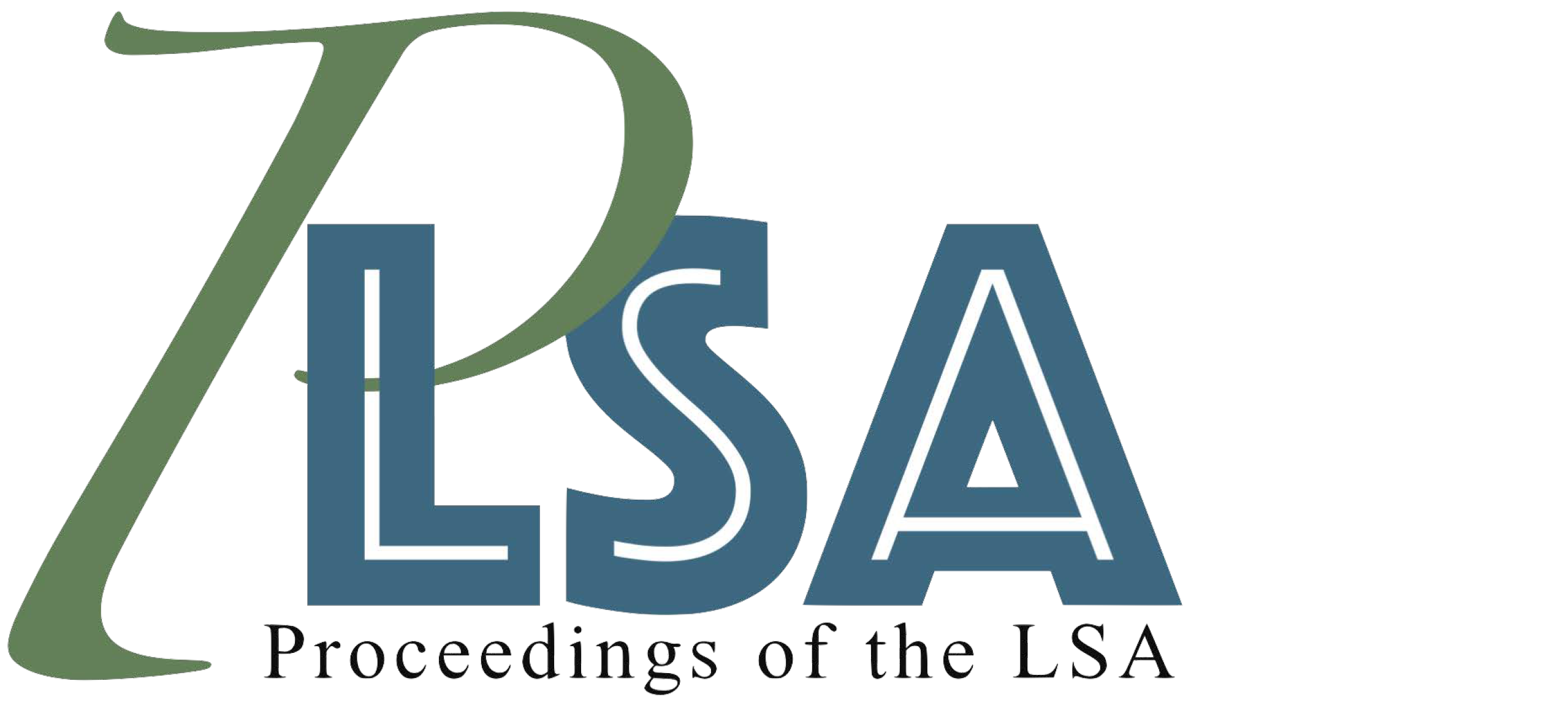An exploration of principled mappings between English adjective order and subjectivity
DOI:
https://doi.org/10.3765/plsa.v10i1.5939Keywords:
adjective order, subjectivity, grammaticality judgment task, psycholinguisticsAbstract
Adjective order in English is both very strict and largely intuitive. Recent research proposes subjectivity as an underlying mechanism for adjective order. The present studies aim to examine whether subjectivity is a productive cue for adjective ordering through two separate grammaticality judgment tasks. In the first task, participants rated grammatical and ungrammatical sentences containing color (typically closer to the noun) and size (typically further from the noun) adjectives paired with images of novel objects, kertunks. In the second task, participants completed the same design but with tables instead, and grammatical and ungrammatical sentences containing material (typically closer to the noun) and shape (typically further from the noun) adjectives. In each task, the images contained some combination of clear and ambiguous traits. If participants are sensitive to subjectivity in the moment, they should rate the ungrammatical sentences (e.g., color-before-size and material-before-shape) higher when the presented image is either of an ambiguous color or material and of a clear size or shape. We find that, in both tasks, participants are not more accepting of the ungrammatical order even when that order aligns with visual subjectivity in a given scene. This suggests that adjective order is not flexible based on context, and that any systematic relationship between subjectivity and order is learned and codified rather than relied upon in the moment.
Downloads
Published
Issue
Section
License
Copyright (c) 2025 Chloe Wright, Kaitlyn Harrigan

This work is licensed under a Creative Commons Attribution 4.0 International License.
Published by the LSA with permission of the author(s) under a CC BY 4.0 license.
